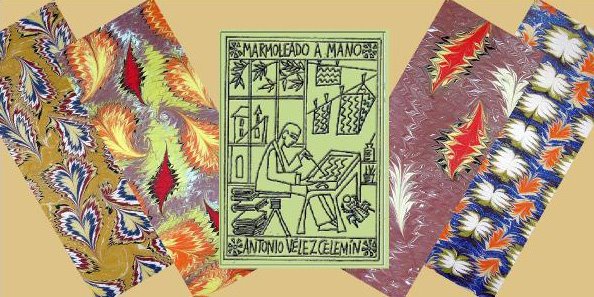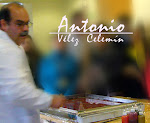In the German National Museum of Nuremberg,
until the first of May, it is possible to visit the exhibition
"Travel partners",
baggage and trunks from 1750 to the present.
Boxes for hats,
trip closets,
baggages with tourist adhesive epoch tags,
Venice, Zurick, Munich...
How did the prima donna Marlene Dietrich traveled with her 83 baggage bundles?
or how the nobel Thomas Mann with his mother-in-law?
Undoubtedly it is a very interesting exhibition,
I recommend to make a visit if there is the opportunity to do that.
But for many of us who enjoy the decorated papers
there are more motives for not lost it.
Two motives in particular.
The first one, this first-aid travel kit of the middle of the XVIIIth century.
Although the little drawers, the hinges and the measured spaces for the bottles turn it into a delightful piece, the lid is lined in his interior with a brocade paper, an imperial eagle on a red background.
The brocade papers, of complicated making by means of plates of alloy, metal irons and an engraving press, enjoyed big esteem in the XVIIIth and XIXth centuries. They were used for the binding, but also they had other uses.
The opera theater "La Fenice" of Venice appeared the day of his opening papered with this type of decorated papers.
Goethe, when he was a child, he liked to buy those who were plenty with figures of animals, like he tells in his memoirs.
The second motive is another similar piece,
a decanter,
but this time his lid covered with paste paper.
The paste papers are more valued in the countries of the north of Europe than in those of the south. Although it is possible that my impression was not completely true.
But certainly, what is clear is that the artisan who realized this paper could use a simple method to do it, his own thumb, with which he planned all the circles that are seen. This thumb, with his fingerprints:
could not want to be the signature of the master?
Other pieces that might have been part of this exhibition that I recommend are the books.
They are our inseparable travel partners, essentialy in an epoch in which the arrival was more delaying that at present.
But, you know, in them you can find an infinity of decorated papers,
of all types,
of all colors,
for every taste.
Precisely it is becoming fashionable in Germany the last thing on new technologies of Spain, the "book".
If you want to verify it go to this link:
***
The two images that illustrate this article are reproduced by permission of Dr. Christian Vogel, of the German National Museum of Nuremberg, to whom I am grateful for his collaboration.
Tanja Karipidis informed me about the opening of this exhibition.
The original "book" is a video belonging to www.leerestademoda.com
I am grateful to Susanne Krause who sent to me the link to the subtitled version in German.
I do not know if there are other versions in different languages... but they should be.














No comments:
Post a Comment